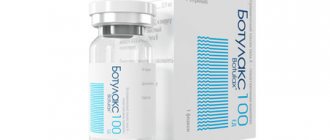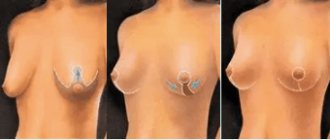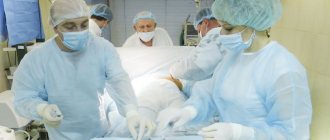The term “mandibuloplasty” combines operations to correct the shape of the lower jaw. The purpose of their implementation may be to reduce or correct the shape of the angles, remove (resection) some bone fragments, or enlarge the jaw. With the help of mandibuloplasty, not only aesthetic problems are solved. For example, an improperly shaped jaw can lead to problems with your bite. In this case, correction surgery allows you to simultaneously solve problems of a functional nature: to prevent digestive disorders.
A little history
In Russia, bone grafting of the lower jaw began to be used in the mid-20th century. Then a one-stage plastic surgery was performed using a bone graft based on the outer plate of the rib. As for plastic surgery in general, it was recognized as an independent specialty by the Russian Ministry of Health only in 2009. Today, many advanced mandibuloplasty techniques are used, including the use of implants based on innovative materials that do not cause rejection by the body.
Indications and restrictions
The indication for mandibuloplasty is, first of all, the patient’s desire to improve, in his opinion, the aesthetics of his face, which is not high enough, which can be caused by the following reasons:
- Defects of the mandibular angles. Hypo- or hypertrophy of the cervical-mental angle, its deformation, asymmetry.
- Deformation of the edge of the LF body. Curvature, asymmetry, etc.
- Malocclusion – distal, mesial, cross, frontal open, deep. In addition to disrupting aesthetics, malocclusions have a negative impact on the functionality of the dentofacial apparatus - they reduce the efficiency of chewing and impair the functions of swallowing and speech.
- Chin defects. Asymmetry, too massive protruding or too small, receding with smoothing of the lower angle (“bird” profile). Chin plastic surgery has its own name – genioplasty.
Contraindications to mandibuloplasty are all cases in which any surgical intervention cannot be performed:
- Impaired hemostasis (blood formation), including due to medication.
- Oncological diseases - not specifically in the oral cavity.
- Serious chronic diseases of internal organs.
- Endocrine disorders.
- Pregnancy, lactation.
- Acute infectious diseases.
- Age up to 22-25 years (maxillofacial bones must be fully formed).
Types of mandibuloplasty performed
After correcting the bite,
operations to correct the shape of the lower jaw include the following areas:
- resection (reduction of angles);
- implantation (jaw enlargement);
- correction of shape (change of contours).
There is another method of correction, carried out using so-called fillers - fillers injected using a cannula or syringe. Many experts do not classify it as contour plastic surgery. To radically change the shape of the chin, the optimal way is full-fledged plastic surgery.
Indications
Mandibuloplasty can be prescribed in the presence of the following defects of the lower jaw:
Before and after chin correction
- congenital deformations or imperfections (for example, a massive, noticeably protruding or, conversely, underdeveloped chin);
- acquired deformities (can occur after injuries or curvature of the lower jaw);
- noticeable asymmetry of the chin;
- malocclusion.
The patient's aesthetic preferences may also be an indication for surgery. Separately, it is necessary to highlight the indications for bite correction. Often, such defects develop in children as a result of sucking a pacifier or thumb after reaching the age of three. However, they can also be congenital.
Correction of such defects surgically can be prescribed in cases where there are significant deformations of the jaw, the correction of which is impossible through traditional orthodontic treatment. The main indications for plastic bite correction are:
Changing the shape of the chin
- lateral frontal bite;
- severe chin dysplasia with noticeable facial asymmetry;
- frontal open bite.
Surgery is considered necessary if the patient has:
- difficulty chewing;
- problems when biting;
- position of the tongue between the teeth when swallowing;
- difficulty speaking;
- incomplete closure of lips.
As a result of surgical correction of the bite, the jaws are set in the physiologically correct position, and the teeth come into maximum contact with each other when they are closed.
Contraindications
For some diseases and pathological conditions, mandibuloplasty is not indicated. These include:
- diabetes;
- heart and lung diseases;
- oncological diseases;
- severe chronic pathologies;
- infectious diseases;
- the presence of an inflammatory process in the body;
- bleeding disorders.
There are age restrictions for many operations on the lower jaw. They are associated with the factor of incomplete formation of bone tissue. As a rule, this process ends by the age of 23-25.
General overview
Mandibuloplasty is an aesthetic operation that involves correcting the shape of the edges of the body and the size of the lower angle of the jaw.
To make it clear what we are talking about, we will provide some general information.
The human mandible consists of the following elements:
- body (the curved part on which the alveolar ridge with teeth is located);
- 2 branches directed upward and forming a cervical-mental (lower) angle with the body;
- articular processes crowning the upper parts of the branches.
Surgeries on the lower jaw are divided into two types:
- Orthognathic, aimed at eliminating dentofacial anomalies that lead to disruption of the functionality of the dentofacial apparatus (for example, lengthening or shortening of the jaw body).
- Mandibuloplasty.
If a patient with a dental anomaly requiring surgical intervention consults a doctor for mandibuloplasty, orthognathic surgery is performed first, followed by mandibuloplasty.
In cases where combined surgery is possible, orthognathic correction and mandibuloplasty are performed simultaneously.
The following types of mandibuloplasty are distinguished.
- Reducing the angles of the lower jaw.
- Increased angles of the lower jaw.
- Correction of the shape of the edge of the body of the bass.
The mandibuloplasty strategy consists of increasing or decreasing the volume of bone in certain areas of the jaw body, and involves resection (removal), reposition (movement) of bone tissue or installation of implants.
In the most difficult cases, a combination of these operations is used. As a result of mandibuloplasty, the lower part of the face acquires expressiveness and beauty, a feature that can be called “chiseling.” Beautiful people are said to have “chiselled” facial features.
In recent years, cartilage implants have been used. They are made from the patient's own cartilage using tissue engineering methods. Thanks to their “kinship” with the patient, they are absolutely compatible with his body and are completely integrated into the jaw.
Such implants do not “dissolve”. Their volume and shape are preserved for life, as is the result of the entire operation.
Reference. As an alternative to mandibuloplasty, contour plastic surgery is used, which is the injection of fillers under the skin. The use of contour plastic surgery is limited to a small area of correction and a temporary effect.
After about a year, the fillers “dissolve” and a repeat operation is required. The main advantages of this type of correction are low invasiveness and affordable price.
Why does the jaw click when chewing and how to eliminate the unpleasant symptom.
Come here if you are interested in how to correct a shift in the midline of your teeth.
At this address https://orto-info.ru/zubocheliustnye-anomalii/chelyustey/krivaya-ne-prigovor.html we will find out whether it is possible to correct a crooked upper jaw.
Preparation
The preparatory stage of surgery on the jaw to correct its shape, correct the bite and other purposes takes on average from 7 to 10 days.
Most clinics conduct computer modeling, which allows you to predict the result. The patient can see what changes his face will undergo due to the correction.
Before and after chin reduction
Then the plastic surgeon conducts a series of consultations to identify deficiencies, deformations of the lower jaw and determine the specific type of surgical intervention required, preparing the necessary materials. Since every person's face shape is different, the most suitable implants are pre-fabricated for each patient.
A number of tests are also carried out in advance:
- general blood analysis;
- blood chemistry;
- coagulogram (to determine blood clotting);
- fluorography;
- ECG.
Possible complications
Swelling and moderate pain are considered normal after surgery. But if they do not go away within a week, and/or some other symptoms of trouble appear (for example, bleeding), this is a sufficient reason to consult a doctor
The most common complications:
- decreased sensitivity, numbness in the lower jaw, lasting more than a week (the reason is usually pinched nerve endings due to swelling and the presence of an implant);
- bleeding;
- implant displacement – can occur in the first days after surgery;
- infection at the surgical site.
In all of the above cases, the patient must consult a doctor to identify the cause and carry out the necessary treatment measures.
Methods used
Chin plastic surgery is performed under general anesthesia. Depending on the tasks set and the specific type of intervention, it takes a different amount of time.
Result of bite correction
Chin reduction
If the chin is too pronounced, the technique of osteoplastic transformation of the lower jaw is used - an operation to reduce it, during which excess bone fragments are removed. The incision can be made:
- under the lower lip, inside the oral cavity;
- externally, in the natural fold of skin under the chin.
The use of the second method is more appropriate in the case of combining mandibuloplasty and facial rejuvenation. During the operation, special instruments are used, with which the surgeon cuts off unnecessary parts of the bone tissue and removes them.
Enlarging or changing shape
If it is necessary to correct the contours and (or) build up the jaw bones, special implants are used. As a rule, the operation is performed through small incisions (3-4 mm) inside the oral cavity: this avoids the appearance of scars.
Insufficient development of the chin is eliminated in two main ways:
Lower lip and chin correction
- by installing an implant under the periosteum;
- through the elevation of the bone bridges.
The material used must be optimally suited in terms of density. Today, special dense silicone is used to make prostheses. It has all the necessary characteristics:
- takes root easily;
- does not react and does not cause rejection by the body;
- Suitable for almost all patients.
Another popular material used in mandibular correction surgery is porous implants. They quickly grow into body tissues.
In some cases, implants are replaced with prostheses based on cartilage tissue. Modeling of their shape is carried out by the surgeon directly during the operation itself.
Fillers
Gentle methods of chin correction include contouring performed with fillers using a syringe or cannula. It allows you to significantly improve the shape and increase the volume of the lower jaw, but does not provide a radical change in shape.
Another option is possible: using the patient’s own fat cells obtained through liposuction. They are injected into the chin area by injection.
Bite correction
Corrected bite
Surgeries on the jaw to correct the bite are also performed under general anesthesia. A small incision is made in the vestibule of the mouth to expose the jaw bones on both sides. After this, a piece of bone in the back of the upper jaw is removed and the jaw is pulled up. As a result of the correction, the lower jaw begins to close completely and creates optimal contact between the lower and upper rows of teeth. Using special plates and screws, the tightened jaw is fixed in the correct position.
In the presence of a defect such as a lateral open bite, surgical correction is carried out through distraction osteogenesis. The essence of the technique is to gradually move apart the bones in fractures, as a result of which new bone tissue is formed to lengthen the jaw. A special structure, a distractor, is fixed in the oral cavity under the mucous membrane. On the seventh day after surgery to correct the bite, the process of lengthening the bone begins. Rehabilitation
After three jaw correction surgeries
After mandibuloplasty, a fixing mask is applied to the face. The patient remains in the hospital for 24 hours.
In the first few days (from 3 to 5), you may experience discomfort or pain, and the appearance of swelling. They disappear completely in about 10 days. Already on the fourth day you can do normal household chores, and after a week you can return to work.
As for sports, they must be canceled for a while, especially after the installation of implants. In this case, at the early postoperative stage, it is also recommended to follow a special diet based on liquid food. These measures are necessary to prevent displacement of the prosthesis.
In general, the duration of the rehabilitation period after surgery to increase or decrease the jaw is largely determined by the intensity of the early functional load, including opening and closing the mouth, lateral movements of the jaw with a gradual increase in amplitude. For quick recovery, massage and regular mouth rinsing using special disinfectant solutions are also important.
Correction stages
The first stage is the manufacture of the implant, for which the Patient’s own cartilage tissue or bone is used. The first option is preferable; such tissue is taken from the auricle; it is easier to work with and is not resorptionable. Many doctors use silicone, which is safe for the body and has a lifetime guarantee.
To perform the intervention, the patient is placed under general anesthesia. To access the area, an incision is made in the lining of the mouth through the skin. In some cases, such intervention is combined with rejuvenation of the neck area. Such complex plastic surgery provides greater efficiency; it improves the contours of the cervical-mental angle and lower jaw. The entire procedure lasts no more than an hour; after completion, a tight bandage is applied to the operated area.
Rehabilitation
After surgery, a bandage is applied to the affected area. The duration of wearing is about a week, but only a doctor can determine this. Often it is removed only after the Patient is discharged, even if this happens the next day. At first there is swelling, but this is a normal process, it goes away and no longer bothers you. There is also mild soreness, especially when chewing food or talking. To reduce symptoms, cold compresses and analgesics or anti-inflammatory medications are recommended. Oral rinses are also indicated, for which antiseptic solutions are used.
The patient should pay attention to the diet, which affects the healing process. It is very important to pay attention to foods rich in minerals and vitamins, and temporarily eliminate solid foods and smoking. Food should be at room temperature and try to avoid anything too hot or cold.
Stitches are usually removed as standard - on the eighth to tenth day. To speed up recovery, for the first time you need to avoid physical activity and overexertion, and try to avoid overheating. But the doctor can make final conclusions about the effectiveness of the operation only after six months.
When to expect results
Before and after correction of micrognathia
The achieved cosmetic effect appears approximately 6 months after surgery. The shape of the chin improves significantly, its contours and size change, and the face as a whole becomes more proportional. The photos below before and after mandibuloplasty allow you to evaluate the effectiveness of modern methods of correction of the lower jaw.
Price issue
As a rule, the cost of mandibuloplasty indicated by clinics in their price lists includes all costs associated with the operation:
- initial and subsequent examinations;
- expenses associated with the patient's stay in the hospital (food, provision of a robe, towel, slippers, hygiene kit);
- anesthesia and the operation itself;
- dressings;
- postoperative procedures and rehabilitation monitoring.
The cost of the operation is influenced by the type and complexity of the surgical intervention, the technology used, the general health of the patient, which may require additional procedures, the pricing policy of the clinic and its location.
In general, the entire mandibuloplasty procedure may require the patient to pay from 100 to 250 thousand rubles. In some cases, even more.
The video provides additional information on the topic of the article.










